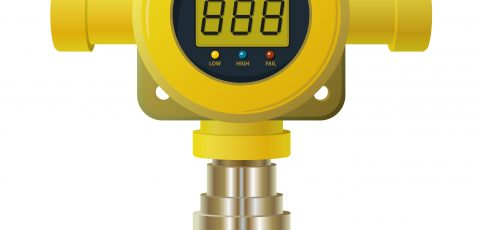Whether it’s a confined space on an offshore drilling platform or a laboratory in a medical research facility, monitoring for carbon dioxide and other toxic gases is of the utmost priority. But as technology has evolved over the past decade, numerous advances have been made with sensors designed to keep employees safe from these dangerous gases. Some of the most innovative advances have been with VOC detectors, also known as Volatile Organic Compound detectors. Due to the advances in electronics, alarm systems, and other aspects of these detectors, a number of differences have become apparent between VOC sensors and CO2 sensors. If your lab or industrial facility is in need of these sensors, here are some key differences to consider.
Calibration Methods
When choosing sensors, it’s important to remember calibration methods are quite different between CO2 sensors and VOC gas sensors. For example, while a CO2 sensor usually requires frequent checks by engineers and maintenance technicians, a VOC sensor generally requires little if any calibration be done manually. For a CO2 sensor, this often has to do with automatic baseline calibration, which focuses on indoor air quality. By using ABC, engineers re-calibrate the sensors periodically based on data generated from the sensor’s software. However, a volatile organic compounds sensor uses advanced monitoring technology, enabling it to be easily linked to vast data networks. By doing so, engineers can monitor activity from centers located miles away, and can also program the sensors to re-calibrate automatically.
Photoionization
Along with the different calibration methods, volatile organic compound detectors also rely on the advanced process known as photoionization. Viewed as perhaps the most accurate way to detect toxic gases and compounds, this method uses ultraviolet light to measure the flow of electron levels. In doing so, it can measure extremely small amounts of dangerous substances much quicker than other sensors, enabling engineers and technicians to perform repairs or other procedures to prevent a severe industrial accident from occurring.
Optical Sensing
For many CO2 sensors, optical sensing technology is what allows them to perform at their best. A low-cost technology that nevertheless makes the sensors very accurate and reliable, it’s used most often in areas where carbon dioxide is pumped through underground pipes, since these leaks are usually difficult to detect in their early stages.
Programmable Controls
For volatile organic compound sensors, programmable controls have played a big part in helping these sensors gain in popularity with companies in various industries. Very helpful in work environments where dust or dirt are common, these electronics allow not only for quick detection of toxic gases and substances, but also greatly reduce false alarms due to their reliance on very strict security parameters set during calibration.
Get the Facts
If your company is in need of sensors to detect dangerous gases and other substances, don’t hesitate to get the facts from industry experts at Global Detection Systems. To do so, contact an Applications Engineer at 409-927-2980 or visit www.gdscorp.com to fill out an online request for additional information.

